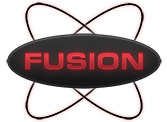
Traditionally, carbide to steel assemblies have been brazed with solid, shim-type filler metals and separate flux. Fusion has a better way for brazing carbide – with paste filler metals. Brazing paste is a homogeneous blend of filler metal powder and a paste-like flux, which is dispensed in a single step and heated at rates of 100 – 500 parts per hour. Brazing temperatures can be achieved by both flame and induction heating methods.
Fusion’s paste for brazing carbide is designated STK-1260-650, a cadmium-free, silver bearing composition that meets the AWS (BAg 24) filler metal specification. STK has a fluxing range between 1000 – 1700°F, is moderately restrictive, and stays active during extended heating cycles. Brazing carbide parts with paste yields tensile strengths equal to or greater than those joined with the shim/flux method.
Both the carbide and the steel parts must be clean so that the molten braze alloy wets their surfaces completely and forms a strong chemical bond with each.

Carbide components are often grit blasted or sanded, to create clean, new surfaces for brazing.
Similarly, steel components are vapor degreased or cleaned with solvents or caustic solutions. The presence of any residual grease, oil, oxidation, dirt, or other surface contaminants adversely affects the wetting of component surfaces by the paste braze alloy and results in an inferior joint. Brazing carbide parts such as saw blades, bur tools, masonry drills, mining tools, router bits, wear studs are good candidates for Fusion paste brazing alloy.
USA: (440) 946-3300
EUROPE: +44 (0) 1279 443 122
Find Your Fusion Rep: USA | AMERICAS | EUROPE | ASIA-PACIFIC
Fusion Equipment in Action: Applications & Videos >>


